During his first season in the NFL, Chargers tight end Hunter Henry caught 36 passes for 478 yards (13.3 yards per catch) and eight touchdowns while splitting time with veteran Antonio Gates. Those are solid numbers for a rookie, and Henry's expected development and second-year jump could lead to a serious boost in production next season, with the tight end taking on a larger role in the Chargers' offense.
Here are 10 rookies -- Henry included -- I see climbing the developmental ladder in 2017.
Important note: This is about rookies who could make the leap to stardom, not those who already got there. So Dak Prescott, Ezekiel Elliott, Tyreek Hill, etc., were not included.
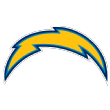
Hunter Henry, TE, Los Angeles Chargers
Henry has the measurables of a matchup issue at tight end. With a 6-foot-5, 252-pound frame and speed in the mid-4.6 range, Henry was a weapon for Chargers quarterback Philip Rivers in the red zone. Of Henry's eight touchdown grabs in 2016, seven of them came inside the 20-yard line where he caught 10 of 15 targets from Rivers.
This is also where we see Henry's advanced route running on tape. He understands how to create separation within the route stem, and his footwork pops on the screen. That allows him to gain leverage on the throw. And with his size, Henry can shield defenders from the ball at the point of attack, box out and finish.
Here's an example of how the Chargers targeted Henry inside the deep red zone (plus 10-yard line). This is a smart game plan from the Chargers to create a favorable matchup for Henry versus Denver's heavy man-coverage scheme:
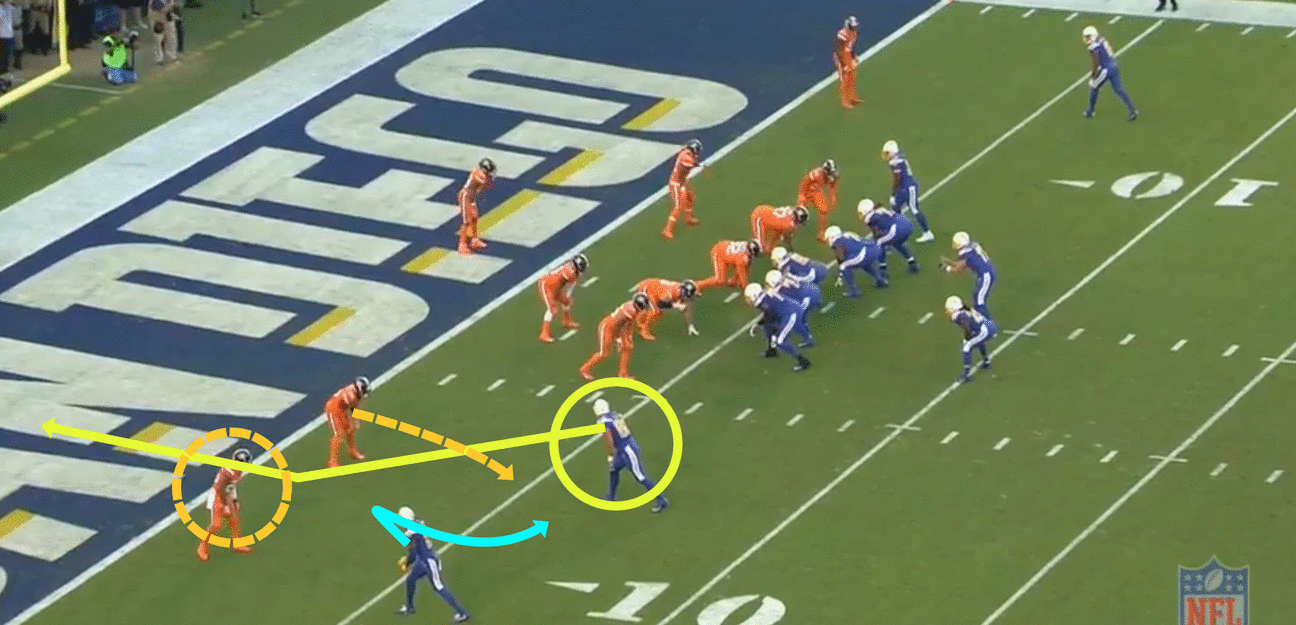
With Henry (yellow circle) aligned in the slot, the Chargers show the wide receiver screen as Henry stems outside before working back up the field (quick seam route). This forces the Broncos to pass off the routes (called a "banjo" technique). However, with cornerback Chris Harris Jr. now playing from an outside leverage position, Rivers can now throw this ball to the upfield shoulder of the tight end. That allows Henry to pin Harris to the outside and secure the catch for six points.
In 2016, Henry played 546 snaps compared to 554 for Gates. However, with Gates expected to take on a reduced role next season, Henry should see more targets from Rivers, given how the Chargers can cater to his formation flexibility (his ability to align removed from the formation). They could put Henry in the slot, the backside of a 3x1 formation (isolation routes), etc. That's where Henry can capitalize on his matchup ability on middle-of-the-field concepts with one of the NFL's top quarterbacks throwing the ball to him.
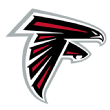
Deion Jones, LB, Atlanta Falcons
You want a linebacker who fits the modern NFL? It's Jones with his movement skills (lateral ability), closing speed (4.59-second 40-yard dash) and athletic frame (6-1, 222 pounds). He's the league's next "monsterback," a hybrid defender with the versatility to erase offensive matchups, play the run and be a disruptive force in the game plan.
During the regular season, Jones racked up 108 total tackles, produced three interceptions, scored two defensive touchdowns and defensed 11 passes. That's versatility and excellent production within the Falcons' scheme. And Jones is the ideal fit for Dan Quinn's defense, given his ability to play in space and find the football. Whether we are talking about his role as a 4-3 base linebacker or as an underneath defender in the nickel/dime packages, Jones can run, hit and play matchups.
Here's an example from the Falcons' win over the Rams in Quinn's core Cover 3 scheme.
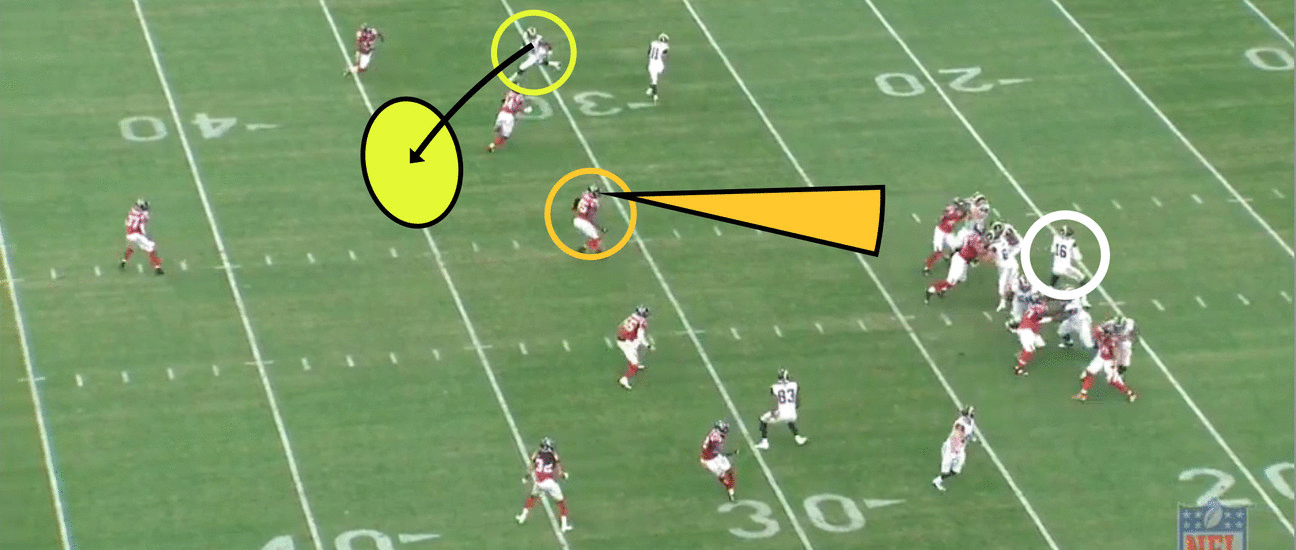
This is a slant-flat combination from the Rams, designed to open up a throwing window versus Cover 3. With the slot receiver running a flat route to pull (or widen) the curl defender and receiver Kenny Britt breaking inside on the slant, Jared Goff thinks he has a window to deliver the ball. However, Jones (orange circle, playing as an inside hook defender) reads the eyes of the quarterback, breaks on the throw and makes an athletic play. And then he gets to showcase his speed as he takes this one back to the house for a touchdown.
Jones put his talent on display for a national audience in Super Bowl LI (nine total tackles, one forced fumble). Man, this guy plays fast. He moves like a strong safety at the second level with the power to deliver a shot on contact. And given the defensive scheme in Atlanta, Jones has a high ceiling as a linebacker or sub-package defender. He can be a star in this league versus today's wide-open NFL offenses.
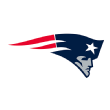
Malcolm Mitchell, WR, New England Patriots
Mitchell had a slower start to the season, but during Weeks 11-16, the rookie caught 25 of 33 targets (75.8 percent catch rate) for 306 yards and four touchdowns. During that stretch, Mitchell only had one drop and he became a reliable target for Tom Brady in the red zone, catching 9 of 11 passes (81.8 percent catch rate) with three touchdowns. Those are positive signs Mitchell is developing trust with the Patriots' veteran quarterback.
That continued in Super Bowl LI, with Mitchell playing a key role in the Patriots' fourth-quarter comeback versus the Falcons, running routes outside of the numbers, the curl, the slant, etc. Mitchell finished with six receptions on seven targets for 70 yards (11.7 yards per catch).
What do I see on the tape from Mitchell? Solid route running. We have to start there in the Patriots' system, because Mitchell understands how to sell the route stem and push the defensive back down the field before snapping back to the football. That's how you create separation on intermediate throws.
But Mitchell can also win on inside breaking routes, he has the speed to get on top of the secondary, and I like his ability after the catch. He has quick burst to pick up more yardage.
This is an example of his ability inside the red zone. Mitchell beats Jets cornerback Darrelle Revis on the crossing route off the boot action to score six.
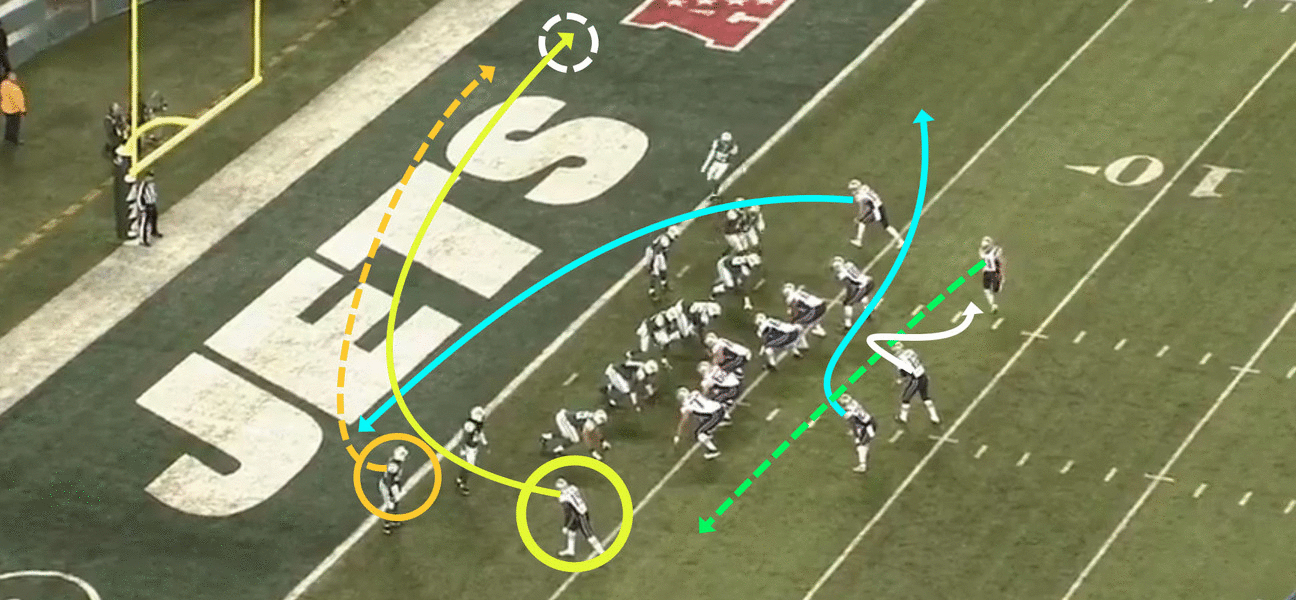
The Patriots dress this up with receiver Julian Edelman on the jet-sweep look, but this is the classic "hide" boot with the running back coming underneath the line of scrimmage. But focus on Mitchell here (yellow circle) versus Revis on the backside of the formation. The rookie wins at the snap, builds leverage inside and then separates on the crossing route. That allows Brady to throw to a spot on the field where Mitchell can generate even more separation from Revis with the ball in the air. Mitchell makes the grab and finishes for a touchdown.
With the possibility that receiver Danny Amendola won't be back with the Patriots next season, Mitchell can solidify his role in New England's three-receiver package. That leads to production and targets in offensive coordinator Josh McDaniels' system.
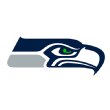
C.J. Prosise, RB, Seattle Seahawks
Due to multiple injuries in 2016, Prosise only played in six games as a rookie. But we can see the talent on tape and the versatility he brings to Seattle's offense as a threat out of the backfield in the passing game.
In his limited playing time, Prosise rushed for 172 yards and a score on 30 carries (5.7 yards per carry) to go along with his 17 receptions (on 19 targets) for 208 yards (12.2 yards per catch). Sure, it's a small sample size, but given Prosise's size-speed combination (6-1, 220 pounds, 4.48-second 40-yard dash) and his matchup ability as a receiver, I see him as a really good fit for coordinator Darrell Bevell's offensive system.
Prosise has a smooth running style, he accelerates through the hole, and I like that he can create more daylight due to his lateral agility. He can bounce the ball to find outside lanes or pick up hidden yardage inside the tackles.
He has even more promise as a receiver (where he started his college career at Notre Dame) because of those matchups he can create. He has the route-running ability to win versus a linebacker or safety. Throw option routes, get him open in the flat or take a shot to expose man coverage.
Take a look at this example from the Seahawks' win over the Patriots when Prosise caught seven passes for 87 yards versus the eventual Super Bowl champs.
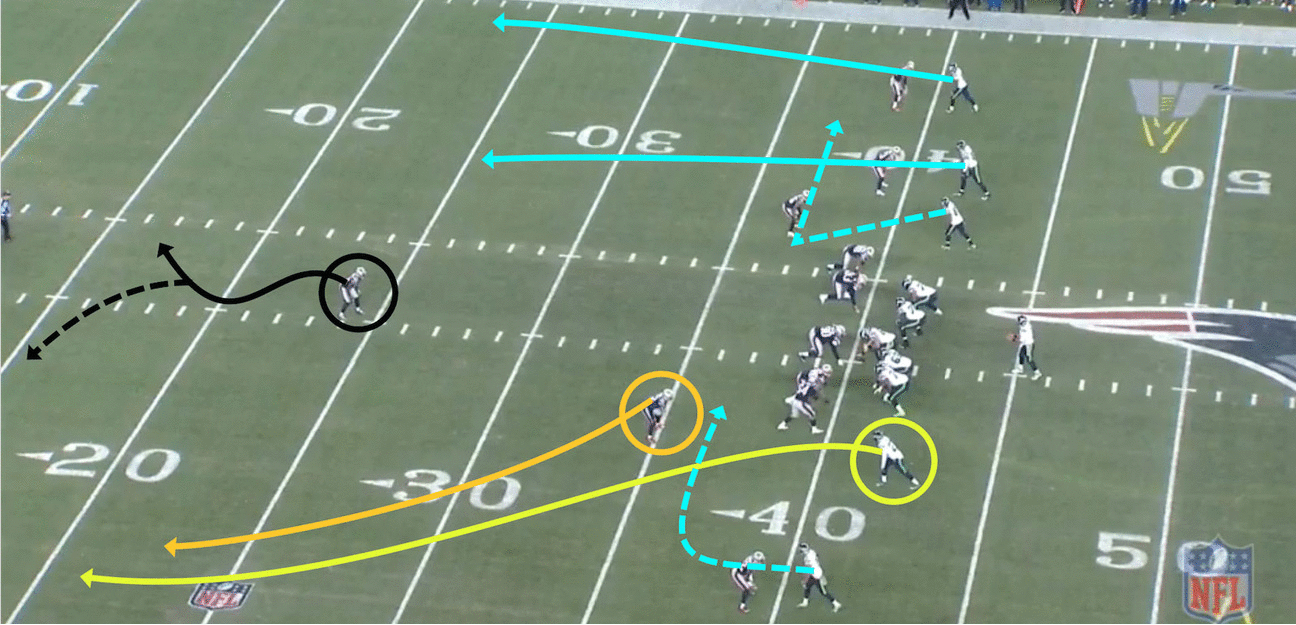
The fade from the slot is one of the toughest routes to cover because of the space the defender has to account for (slot to boundary). That shows up here with Prosise (yellow circle) removed from the formation and drawing a linebacker in coverage. Take a vertical release, stem outside (widen) and then stack on top of the linebacker. With quarterback Russell Wilson looking off (or holding) the free safety, this turns into a one-on-one for Prosise. He separates over the top and finishes.
The injuries? I get it. You have to be on the field in this league to develop a role as a pro. That's something to watch next season. However, if Prosise is healthy in 2017, he has the versatility to fit in the Seahawks' scheme as a complement to Thomas Rawls in the rushing attack and as a matchup weapon in the passing game.

Eli Apple, CB, New York Giants
Apple's numbers aren't going to jump off the page (51 combined tackles, one interception, one forced fumble, seven passes defensed), and his tape was up and down as a rookie. But that's to be expected at the cornerback position. It's a tough transition to play outside of the numbers in the pros, especially for a defensive back who declared for the draft as a redshirt sophomore.
But Apple has the size (6-1, 199 pounds), top-end speed (4.40-second 40-yard dash) and man-coverage ability to make a big jump as a second-year pro, based on what I am watching on film. The skill set is there, and so is the length in a press position. Apple is going to challenge routes and use his hands at the line of scrimmage. And he flashes the transition speed to close on the ball.
Plus, he tackles. Think of a physical, press-man cornerback who is going to compete outside. The next step is to become that playmaker when the ball is in the air. Finish at the point of attack.
Here's an example of that from the Giants-Steelers matchup this past season, when Apple drove on the ball to make a play versus quarterback Ben Roethlisberger.
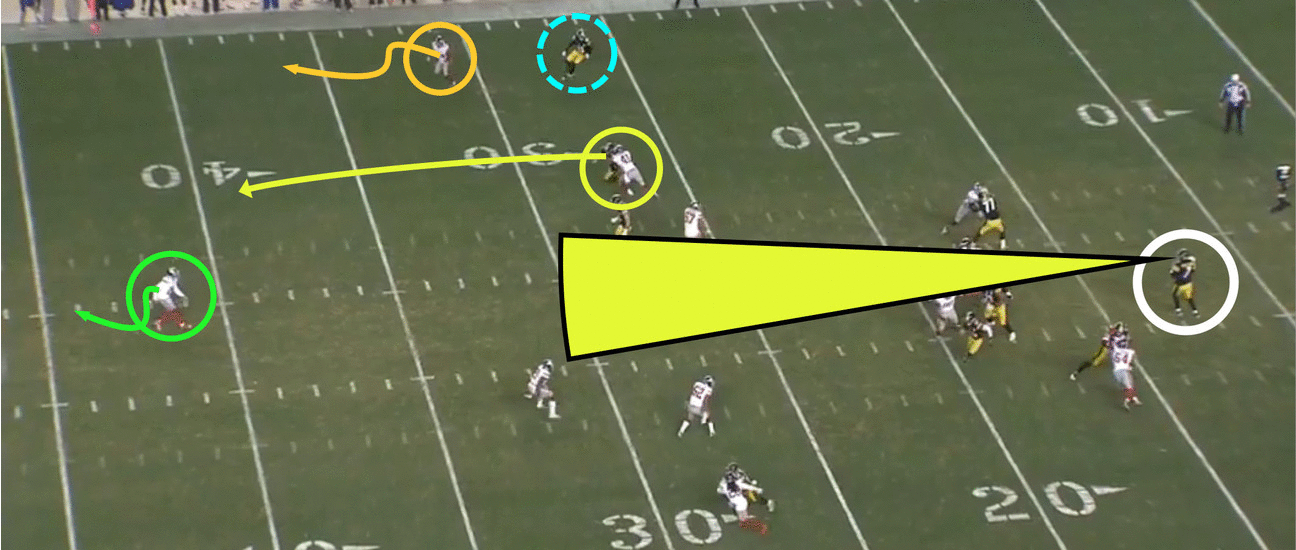
This is a Cover 3 beater from the Steelers (smash-seam) with Roethlisberger holding the free safety in the deep middle of the field with his eyes. The idea here is to occupy Apple (orange circle) with the outside smash (or hitch) route and open up the window to target receiver Eli Rogers on the seam route.
Apple reads the route, overlaps the throw and cuts underneath Rogers to finish this play. Yeah, the throw was a little late from Roethlisberger, but I like the aggressive close on the ball from Apple to make this play on the seam route from an outside-third alignment.
The way I see it, there is a lot of room to grow with Apple, and I believe he has a high ceiling as a cornerback in this league. This is a guy I would love to coach. And with an entire offseason to train like a pro (no combine prep), Apple can make the jump in his second year. The talent, the size, the physicality? That's what I want in the secondary.
The next five

Leonard Floyd, OLB, Chicago Bears: The Bears' top-10 pick had seven sacks as a rookie, and he flashed his unique athleticism as an edge rusher. At 6-6 and 240 pounds with 4.60 speed, Floyd has the acceleration to get to the quarterback, but he also has to add some upper-body bulk to his frame. That will allow him to convert speed into power to become a consistent threat as an outside pass-rusher for Vic Fangio's defense. Floyd's skill set is still a little raw, but the potential is there.

Sterling Shepard, WR, New York Giants: Shepard (5-10, 194 pounds) is a dynamic talent who can create matchups for the Giants due to his electric footwork, route running and speed in the high-4.4 range. In 2016, Shepard produced 65 receptions for 683 yards and eight touchdowns. And with the Giants expected to move on from receiver Victor Cruz, look for Shepard to make even more plays in 2017. He will get a lot of one-on-one coverage working opposite of Odell Beckham Jr. Aligned inside or outside the numbers, Shepard can create matchups with his lateral and vertical speed.

Kenneth Dixon, RB, Baltimore Ravens: Dixon jumps into the mix because of his versatility. He has the size (5-10, 215 pounds) to handle high-volume touches and the running style (lateral quickness) to make defenders miss at the point of attack. In 2016, after a knee injury delayed the start of his season, the rookie rushed for 382 yards and two touchdowns, while catching 30 passes for 162 yards and a score. A very good route runner who displays the burst to separate at the top of the stem, Dixon has the ability to be a three-down back in the pros.
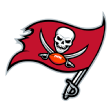
Vernon Hargreaves III, CB, Tampa Bay Buccaneers: Hargreaves doesn't have the top-tier size (5-10, 204 pounds) or speed (4.50-second 40-yard dash), but I would want this guy in my secondary because he competes. Just look at his ability to close on the route, play the ball and finish. In 2016, Hargreaves posted 76 combined tackles, one interception and eight passes broken up, but I expect those numbers to jump in Year 2. Like Apple, the Bucs cornerback will have to continue developing his technique, but the overall skill set? It's there. And he's tough.

Paul Perkins, RB, New York Giants: Perkins' lateral ability is off the charts. He can make a linebacker miss in a phone booth and then find a crease to burst up the field. This guy is lightning quick. In 2016, Perkins (5-10, 208 pounds) rushed for 456 yards on 112 carries (4.1 yards per carry), and he also caught 15 passes for 162 yards. Decent numbers, but the tape is telling us that he can be a weapon for the Giants' offense next year. Think of the nickel runs (three-receiver personnel), the quick option routes and the screen game. The Giants' rushing attack was an issue last season. But Perkins' ability gives New York an opportunity to create specific game-plan opportunities to get him the ball.
